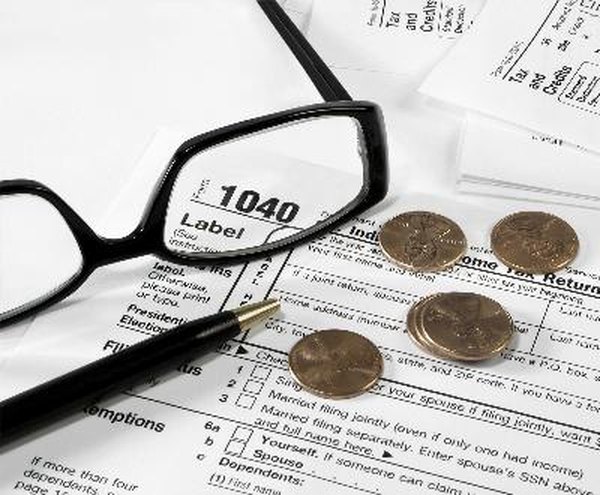Minimum Income Required to File Federal Taxes
Filing taxes, even if not required, may result in a refund.
Form 1040 Tax Forms image by Viola Joyner from Fotolia.com
For employed individuals across the country, paying taxes is an inevitable obligation that occurs on an annual basis. For many taxpayers, filing a tax return is the first step toward receiving a generous refund on their paycheck withholdings throughout the year. Depending upon your specific income level, however, you may not be required to file a federal income tax return all. For example, in 2017, individuals making less than $10,400 were not required to file a tax return. That being said, a variety of additional factors may increase your income to the point where filing a tax return is a necessity. Identifying the minimum income for federal tax withholding and general tax filing requirements can help you get a jumpstart on your preparations for next tax season.
Identifying the Minimum Income
There are two distinct benchmarks that relate to the minimum income needed to require a tax return. If you are employed in a traditional workplace, the minimum income without tax filing requirements is any sum less than $10,400. Any sum greater than this will require a tax filing. If you are self-employed, any sum greater than $400 will require a tax filing. Keep in mind, however, that these sums apply to single individuals who are 65 and under in age. If you are older than 65, the traditional employment benchmark raises to $11,950, while the self-employed standard regarding the minimum income for federal tax withholding stays the same.
Depending upon your age and your marital status, your minimum income threshold will change significantly. For example, if you are married and filing a joint return, the threshold is doubled to $20,800 (exactly double the amount for a single filer under 65). Also, if you are the head of your household and are under 65, your income threshold is raised to $13,500. In all scenarios, the threshold for a self-employed worker remains at $400. As a general rule, individuals over the age of 65 have a higher income threshold before filing requirements begin. As an example, an individual over 65 who is also the head of the household can earn up to $14,950 before being required to report their income.
If you are a single dependent and under the age of 65, you can earn up to $6,350 before you are required to file taxes. A single dependent over the age of 65 can earn up to $7,900 before reporting their income on a tax filing. As you can see, the minimum wage without tax for dependents is noticeably lower.
Notable Filing Exceptions
One of the most important exceptions to tax file rules regards personal tax exemptions for dependents. A dependent is unable to claim a personal tax exemption if another taxpayer has already claimed them on their tax return. Also, it is important to remember that an individual cannot claim the income of a dependent on their tax return. Instead, they can claim a tax exemption which offers benefits without directly assuming responsibility for the dependent's taxable income. These rules are an integral component of your tax filing process and should be fully understood before beginning the filing process.
It is also important to remember that the lack of a traditional income doesn't necessarily exclude an individual from filing responsibilities. If, for example, an individual earns more than the minimum amount through capital gains or investment income, they will be required to file a tax return.
2018 Income Tax Filing
The Internal Revenue Service rolled out a new Form 1040 as the standard method for filing income taxes. The 1040-A and 1040-EZ were phased out. The minimum filing requirements for single individuals in 2018 increased to $12,000 for age 64 and under and $13,600 for age 65 and older.
Changes from 2017 Filings
The 2018 filing standards included a number of changes and alterations to the previous year's tax code. The bulk of these changes were made to the ranges of taxable income brackets. For example, single individuals filing a 2017 tax return were forced to pay 15 percent tax on income if they made as little as $9,326 in taxable income. For 2018 tax returns, this lower limit was raised to $9,526. General speaking, individuals on the lower levels of the tax bracket were allowed to earn more in 2017 than in previous years before incurring higher tax rates.
References
Writer Bio
Ryan Cockerham is a nationally recognized author specializing in all things business and finance. His work has served the business, nonprofit and political community. Ryan's work has been featured on PocketSense, Zacks Investment Research, SFGate Home Guides, Bloomberg, HuffPost and more.

